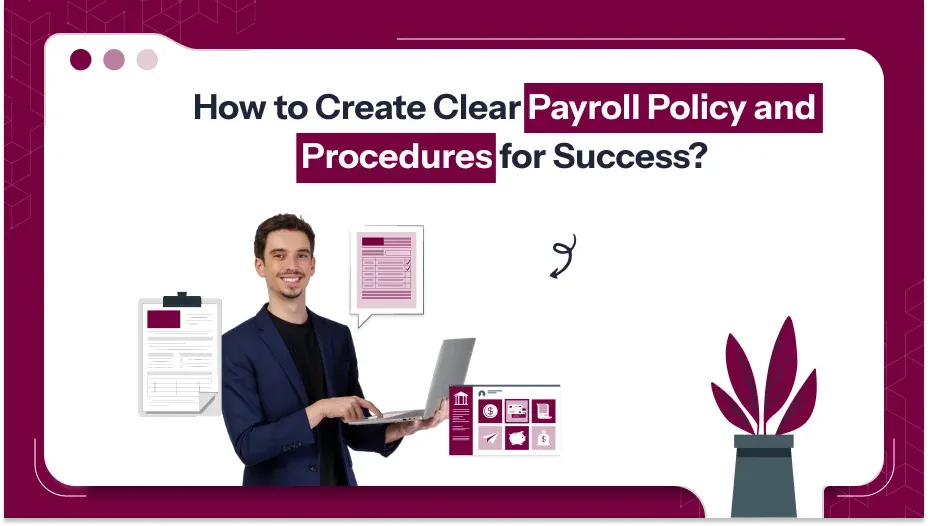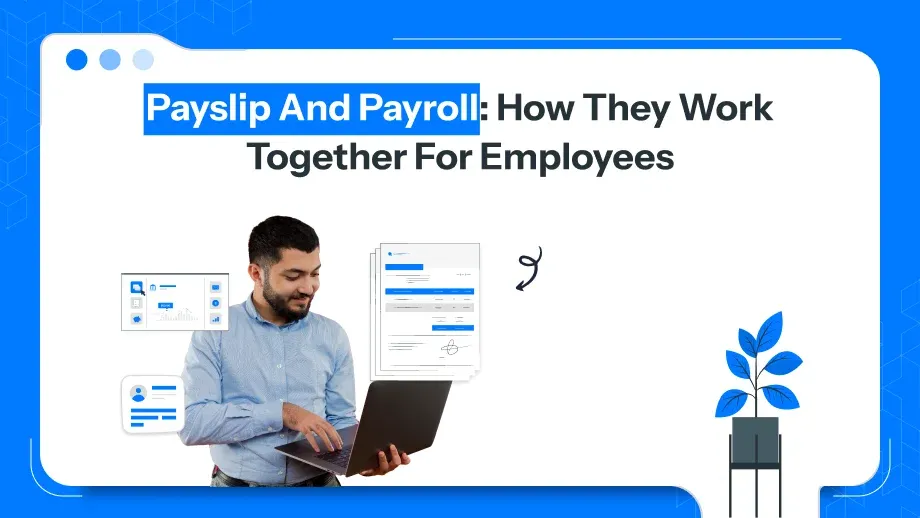
Efficiency in managing the payroll is key in both big and small business. Paying employees on the dot, with hold correct taxes, and comply with law requirements make any business shine on its operations and management side. A proper pay policy and procedure framework supports attaining the ideal level of precision and uniformity.
In this article, we’ll go over everything you ever wanted about payroll management and demonstrate how to put together an effective payroll architecture utilizing a specific payroll policy and procedures guide template.
Why Payroll Policy and Procedures Matter?
A great payroll system comprises more than just a paycheck handling routine; it is a system that assures conformity, consistency and & transparency throughout each step. Payroll policy and procedures is the collection of principles that a firm uses to handle employee salary, clockwork, and taxes.
Having a clear and detailed payroll policy helps prevent confusion, reduces errors, and ensures your business stays compliant with both local and national employment laws. Without these policies, businesses risk running into payroll errors, which could result in employee dissatisfaction, legal issues, and costly fines.
Using a payroll policy and procedures guidelines, you may remove uncertainty from the payroll process and offer simple instructions to help accelerate operations. You can also utilize a payroll policies and procedures template to develop a document that is particular to what your business needs.
Components of Payroll Policy and Procedures:
You will have to pay attention to the following elements for an efficient payroll structure. Here is an overview of the most important elements of payroll policy and procedures guide:
Payroll Schedule and Frequency
Determining when employees are paid is a basic component of any payroll policy and procedurs. Your company has to decide on the frequency of paychecks. The common payroll schedules are as follows:
Weekly: Employees are paid every week, usually on the same day.
Bi-weekly: Paychecks arrive biweekly, usually on Thursdays.
Semi-monthly: Employees get paid twice a month, typically on particular days such as the 15th or 30th.
Monthly: Employees receive compensation at the conclusion of each month.
A payroll policy and procedures document should clearly describe the payroll schedule as well as requirements for payroll reporting time worked or changes in payment, like extra or incentives.
Timekeeping and Attendance
Correct timekeeping is important so that employees receive the right pay. Payroll policies should also indicate how employees record their hours worked. The company may use paper time sheets, digital time management software, punch clocks, or biometric systems.
This part of the payroll policies and processes ought to additionally outline how over time, paid time out, sick leave, and additional kinds of absences are documented.
Employee Classifications
Classifying employees accurately is very important in payroll. Your payroll policies and procedures should identify the various classifications of workers, including the following:
Exempt personnel: This are often salaried and do not receive overtime.
Non-exempt employees: This typically get compensated hourly and get overtime pay for performing in excess of forty days per week.
This category affects how pay is set and ensures that the business consistently complies with labor laws like the FLSA.
Deductions and Benefits
Payroll policies should identify any payroll deductions from an employee’s pay. Some of the common ones are:
Taxes: Federal, state, and municipal taxes are typically deducted based on an employee’s earnings.
Employee perks: This include deductions for health insurance, retirement contributions, and other benefits for employees.
Other deductions: They include salary garnishments, dues to unions, and donations to charities.
The payroll policies and procedures guide should indicate how each deduction is calculated and the criteria for eligibility for benefits. It should also indicate how employees can change or update their benefit preferences.
Overtime, Bonuses, and Incentives
The payroll policy and procedures document should clearly state how overtime is computed (usually 1.5 times the regular pay rate) and any company-specific rules governing extra qualification. Furthermore, reward, incentive, and commission systems ought to be clearly defined so that employees know how they may receive extra money as well as how it is calculated.
Payroll Corrections
Mistakes are possible and when these occur your payroll policies should address the process by which errors are corrected. This includes:
- How an employee can report discrepancies in their pay
- How payroll staff must address corrections, including reissuance of paychecks for the correct amount.
- Timeline when corrections shall be effected
- A well-defined payroll corrections policy helps ensure any mistake to be handled efficiently and without confusion.
Preparation of Payroll Policy and Procedures Guide
Since after having investigated the key components of payroll policies and procedures, let’s talk about what it takes to create a customized payroll procedures and guidelines book. Here’s how you do it:
Understand Legal Requirements
The initial step in developing your guide is to guarantee payroll reporting compliance with federal, state, and local labor regulations. You’re going to need to understand the standards for salary minimums, over time, income hiding, and employee benefits. To guarantee that your payroll practices are in conformity you ought to speak to an attorney or a professional in human resources.
Involve Key Stakeholders
Consult the HR, accounting, and payroll teams to inform what should go in the handbook. This group will give valuable insight as to the practicality of the payroll and the issues that typically arise from it.
Use Simple and Clear Language
Keep it simple, using clear and understandable language. Jargon and other terms that would only confuse your staff should not be used in creating a payroll policy and procedure guide. The more understandable the guide, the better everyone will find the payroll process to be.
Stay Organized
Organize your guide by section for easy access. For example, you want to have clear headings for payroll schedule, deductions, overtime policies, and the like. It would also be a good idea to include an FAQ section addressing common concerns.
Regularly Review and Update
These laws and regulations may change from time to time, so payroll policies and procedures have to be reviewed and updated periodically. It may be annually or whenever there is significant change in legislation or business operations.
Use of the Payroll Policy and Procedures Template
If you’re just starting, a payroll policies and procedures template is an excellent way to make sure your document is complete and organized. These templates give you a structured framework to fit your company’s needs.
A payroll policies and procedures template will usually include:
- Table of contents including all the main payroll components
- Sample language for each section such as pay schedules, deductions, and overtime policies.
- Examples of timekeeping practices, which include clocking in procedures, and leave tracking.
- You can alter the template for your company’s payroll needs as you add or eliminate sections as deemed necessary. Also, a template will save you time and labor when you come to write out your own policy and procedures.
Best Practices When Your Payroll Policy and Procedures are in Place
Once you’ve developed your payroll policy and procedures, be sure to operate them with the best practices:
Automatic Payroll
Investing in payroll software may assist you save time and hinder errors. Many payment software compute salary, tax tax withholdings, and deductions by themselves, expediting the entire procedure.
Train Your Team
Verify that everyone who handles payroll, including HR, accounting, and payroll specialists, receives sufficient training. This guarantees all your payroll system functions properly and that employees know how payroll problems are handled.
Keep Detailed Records
Pay stubs, tax filings, time sheets, and communications with the employee regarding the payroll should all be kept properly. This would prove helpful at audit times and show that all relevant records are properly kept.
Conclusion
For it to operate efficiently and legally, an organization will require unambiguous, organized payroll policy and procedures. Creating a payroll policy and procedures manual and using a payroll policies and practices template will guarantee that the payroll procedure is simplified clear, and in line with every norms.
As your company grows or your payroll requirements become more complicated, a solid payroll policy or payroll functions will help to maintain uniformity and satisfaction among staff members while reducing the likelihood of errors and legal difficulties. Following and sticking to these best practices will put your business on the path to payroll excellence.





